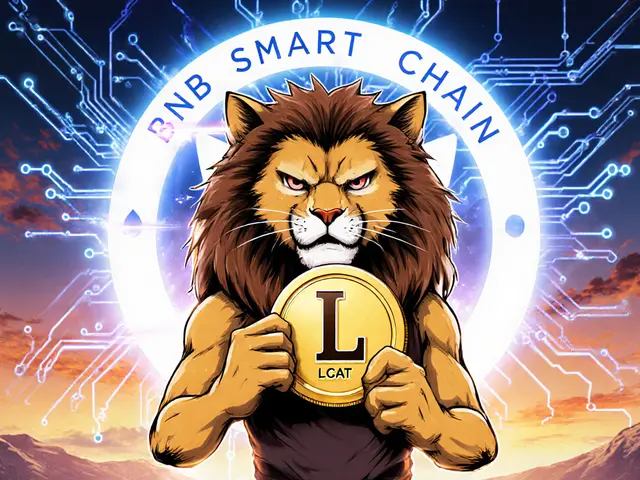Prism Crypto Coin: What It Is and Why It Matters
When working with Prism, a blockchain‑based utility token designed to simplify cross‑chain payments and reward community activity. Also known as PRISM token, it operates on a proof‑of‑stake network that blends fast finality with low fees. Prism crypto coin encompasses cross‑chain payment solutions, features that let users move value between Bitcoin, Ethereum and other major chains without a centralized bridge. At its core, Prism requires smart contracts, self‑executing code that enforces token rules, distributes rewards and handles governance votes to stay trustless. In practice, DeFi platforms, lending, staking and yield farms built on Prism’s network influence its liquidity and price stability. Finally, community‑driven airdrop campaigns, reward distributions that target early adopters and active participants boost adoption and create a feedback loop that fuels growth.
Key Elements Shaping Prism’s Ecosystem
Prism’s tokenomics hinge on three main attributes: supply control, staking incentives, and governance participation. The total supply is capped at 500 million tokens, with 40 % allocated to community rewards, 30 % to staking pools, 20 % to development, and 10 % reserved for strategic partnerships. This balance aims to prevent inflation while ensuring enough tokens are available for meaningful staking yields—often ranging between 5 % and 12 % APY depending on pool size. Governance is handled through on‑chain voting, where token holders can propose upgrades, fee adjustments, or new bridge integrations; this democratic layer makes Prism adaptable to market shifts. On the technical side, Prism uses the Proof‑of‑Stake consensus, which reduces energy consumption compared to proof‑of‑work chains and enables faster block times (≈3 seconds). Because the network is EVM‑compatible, developers can deploy familiar Solidity contracts, opening the door for DeFi protocols, NFTs, and gaming projects to plug directly into Prism’s liquidity pool.
Understanding how Prism interacts with broader crypto trends helps you spot opportunities. For instance, as regulators tighten rules around stablecoins, Prism’s native cross‑chain bridge could serve as a lower‑risk alternative for moving assets, especially in regions where traditional banking is limited. Meanwhile, the rise of decentralized identity solutions means users can verify themselves without handing over personal data—a feature that Prism plans to integrate into its wallet for smoother KYC‑free airdrop eligibility. If you’re a miner looking for new revenue streams, Prism’s staking model offers a simpler, hardware‑agnostic way to earn passive income, sidestepping the high electricity costs of Bitcoin mining. And for traders, the token’s modest market cap means price swings are more pronounced, providing both risk and reward for those who time their entries around airdrop announcements or protocol upgrades.
Below you’ll find a curated list of articles that unpack each of these angles in detail—from mining pool comparisons and Merkle‑Patricia tree explanations to specific airdrop guides and regulatory overviews. Whether you’re hunting for the next high‑yield staking pool, trying to understand Prism’s smart‑contract security, or just want a quick rundown of upcoming token listings, this collection gives you the practical knowledge you need to act confidently.
A clear, beginner‑friendly guide to Prism (PRISM) crypto coin-what it does, tokenomics, price data, and how it compares to other Solana DEX aggregators.
Read More





